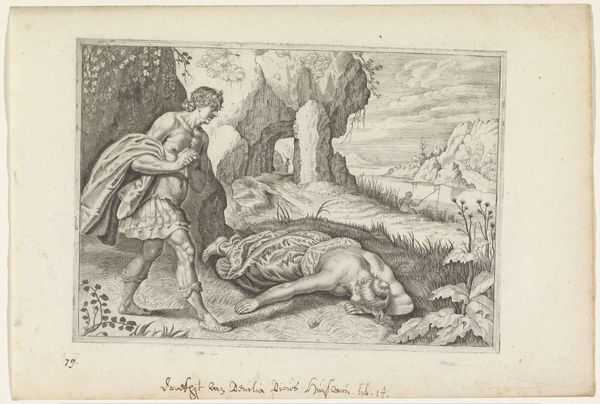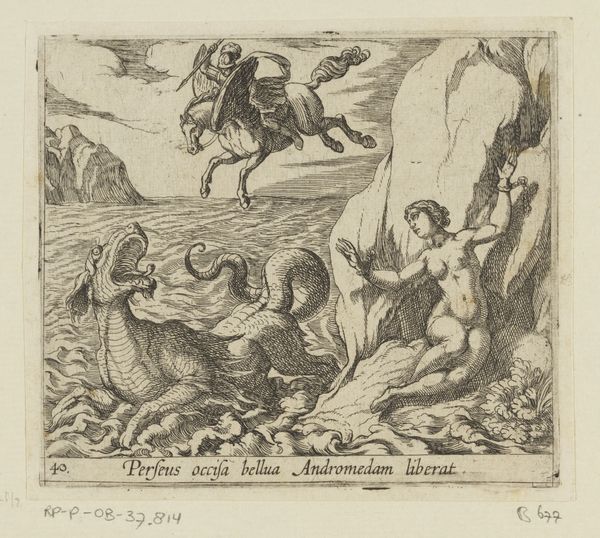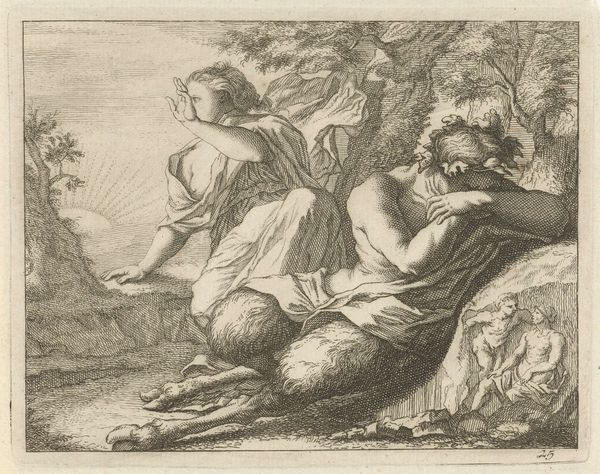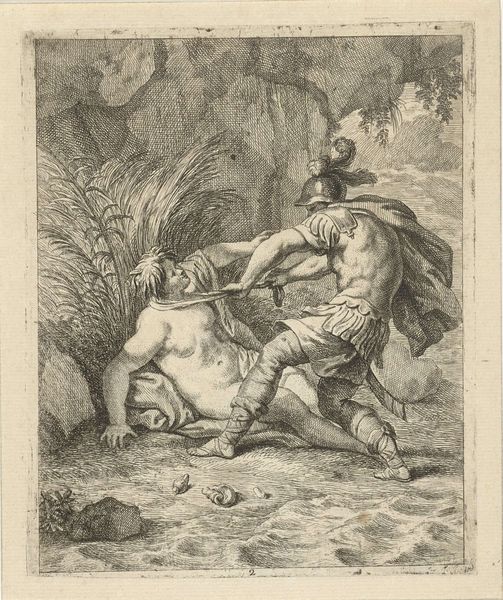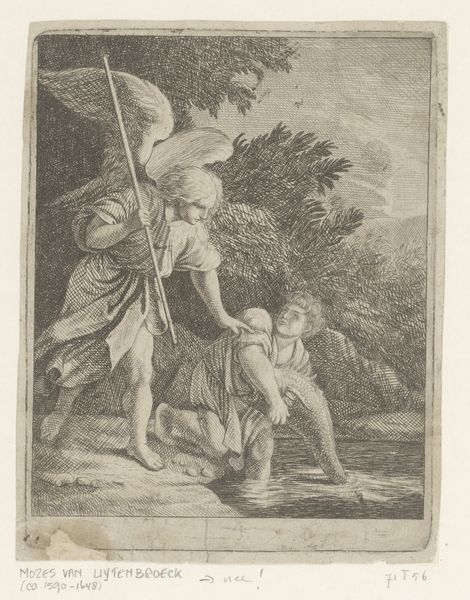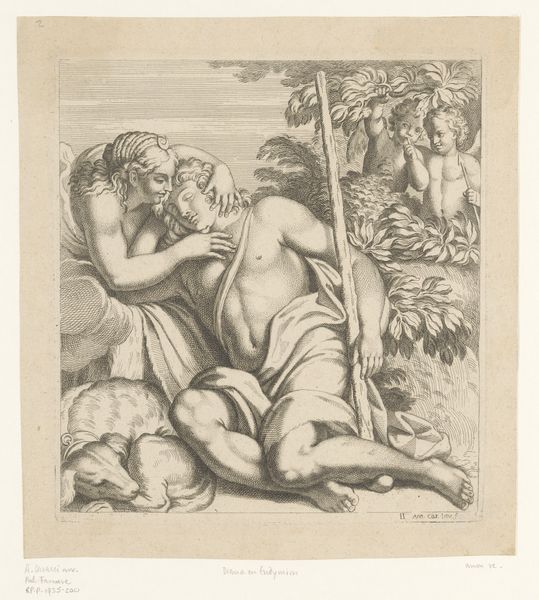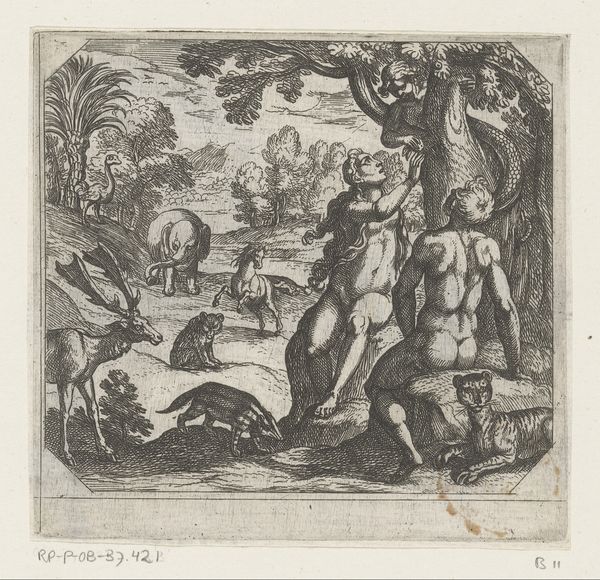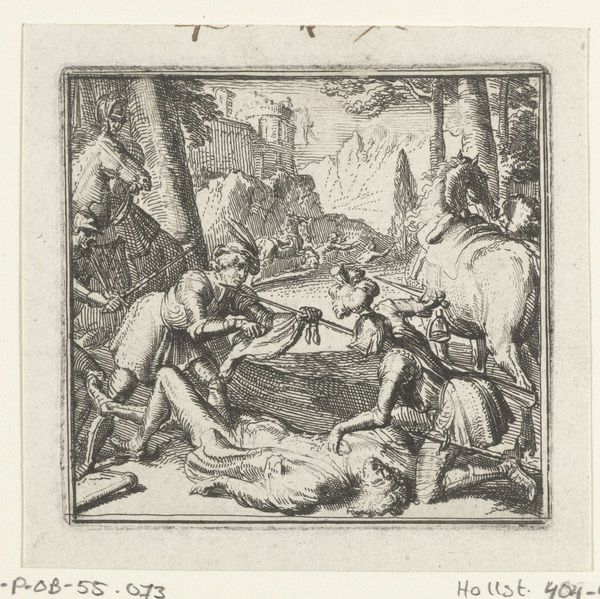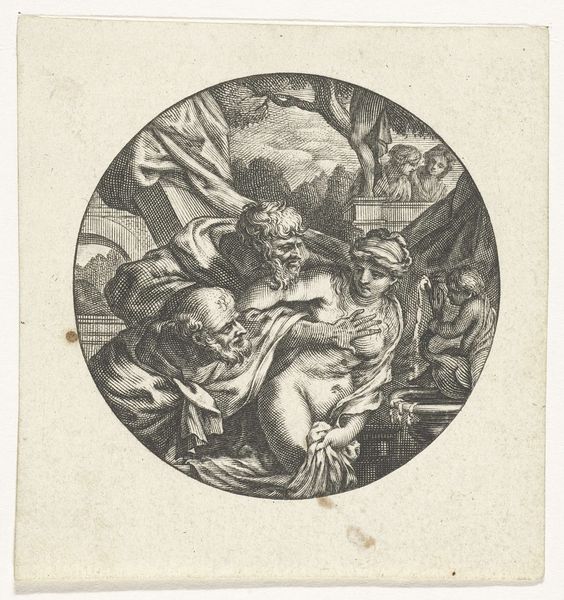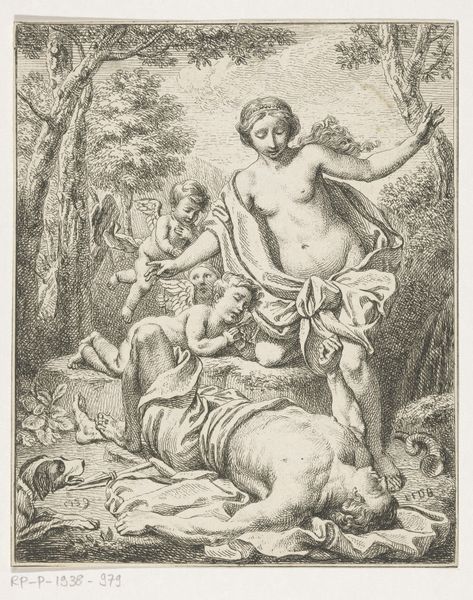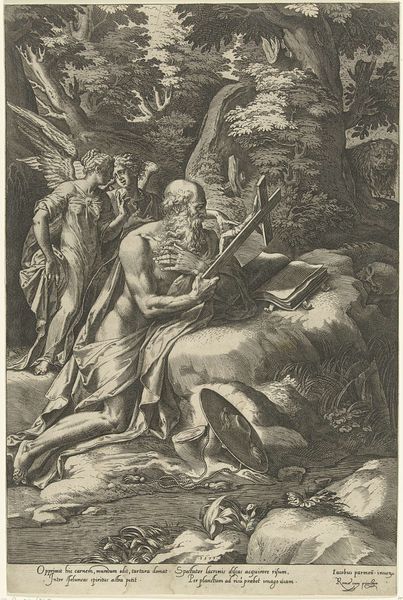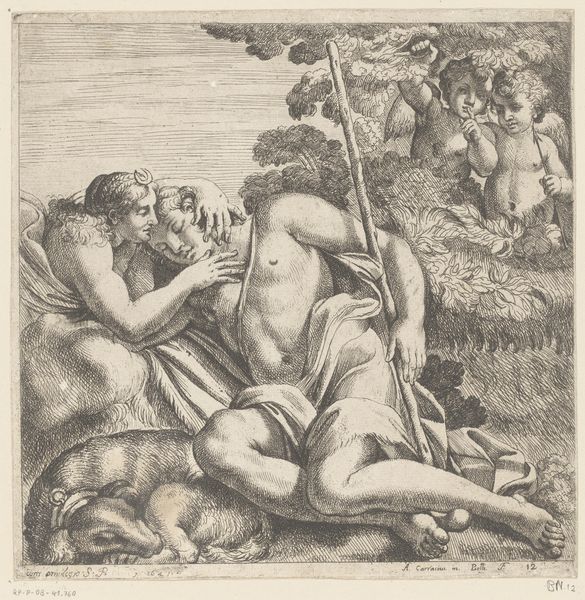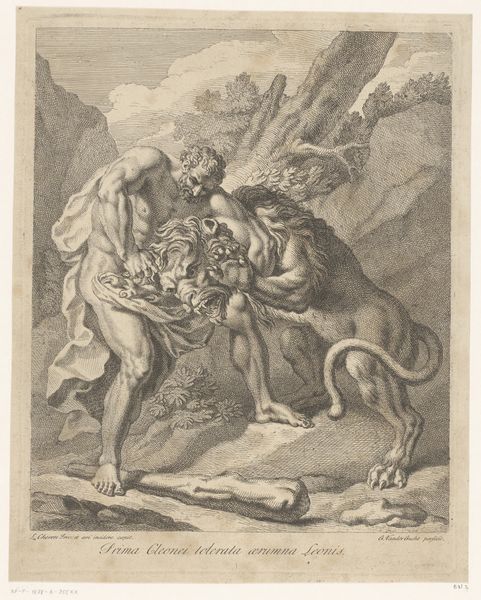
print, engraving
#
baroque
# print
#
old engraving style
#
landscape
#
figuration
#
history-painting
#
engraving
Dimensions: height 104 mm, width 117 mm
Copyright: Rijks Museum: Open Domain
Curator: Looking at "The Death of Hyacinthus," an engraving created around 1606 by Antonio Tempesta, the eye is immediately drawn to the figures rendered in exquisite detail, surrounded by a serene if somewhat somber landscape. What's your take on this piece? Editor: It feels rather melancholic, a kind of resigned grief permeates the scene, wouldn't you say? The figures almost blend with the landscape, their sorrow absorbed by nature itself. It also strikes me how death, even depicted like this, romanticizes the male form. Curator: The visual language certainly borrows from established symbols and motifs of death in art. Apollo cradling Hyacinthus immediately brings to mind imagery of the Pietà, a maternal expression of grief repurposed in a homosexual context. Editor: That connection is key. Beyond the religious imagery it evokes, framing male same-sex love within classical myths offered some limited possibility for exploring those themes. By linking male bodies, love, and death, such stories were cautionary tales that spoke in a complex register. The arrow itself, isn’t that suggestive, considering that it may also represent a transgression or even erotic desire? Curator: Indeed, the arrow certainly plays a crucial symbolic role. And the figures, notice the presence of Apollo's lyre and the devoted hounds? These all add depth. Even Tempesta’s rendering of grief has roots within pictorial traditions going all the way back to classical antiquity, echoing formulas meant to depict ideal emotion and proportion. Editor: Contextualizing those visual devices historically gives them a real specificity, because representations of tragic loss aren’t ever universally perceived, right? They are bound up within political, gendered and, very clearly, socio-economic considerations. Curator: True, looking at art through such layered lenses can change our perception, creating powerful connections between then and now. Editor: Absolutely. And that awareness adds richness to understanding it, inviting fresh conversations across time and space.
Comments
No comments
Be the first to comment and join the conversation on the ultimate creative platform.
